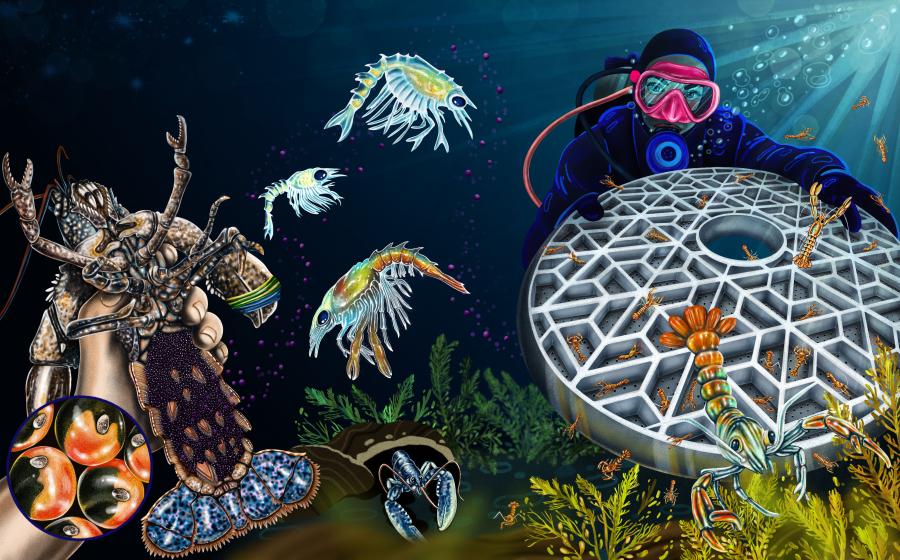Cruising for Disaster | Lessons for Life

Steven P. HughesDescending despite discomfort becomes the ultimate disaster for one inexperienced diver.
Ann felt rushed to get off the cruise ship so she could meet the dive operation taking her and other passengers diving. She wasn’t traveling with a diver, so she was assigned a buddy when she showed up at the dock. That made her a little uncomfortable. She’d never buddied with a stranger, only a friend or instructor.
Still, Ann wasn’t about to miss a chance to dive the Caribbean destination on their itinerary. She hadn’t been able to afford a dedicated dive trip since her certification several years ago and had not been diving recently; she hoped this experience would get her started again. She was already making plans to come back and stay for a few days, to make more dives without the rush.
The Diver
Ann was a 43-year-old female in good health. She was a certified diver, but with limited experience. She hadn’t been diving in more than three years. She had never made a boat dive, nor a dive in the ocean. Her previous dives had all been at local freshwater locations, and she’d always walked into the water from the beach.
The Dive
The cruise ship made it easy to sign up for a dive excursion at the port of call. They did confirm that Ann was a certified diver during registration but did not ask any detailed questions about her experience level. At the dock, Ann met representatives from the local dive operation. They quickly got her outfitted with rental gear and hurried her onto the dive boat—the cruise ship would only be in port six hours and they wanted Ann to have plenty of time in the water. Ann was paired with another passenger, a man about her age, as a buddy.
Diving conditions were good, and Ann was excited about the clear blue water. But she was nervous too. This was all a new experience. Ann watched the other passengers and the crew to make sure she did what she was supposed to do.
She stood up when her dive buddy was ready, and they both made their way to the back of the boat. It was the first time Ann had made a giant stride since her open-water dive course in a pool several years before. Ann’s mask was partially dislodged and began to flood when she entered the water. She got some seawater up her nose. When she bobbed back to the surface, she barely got her mask back in place before her buddy signaled he was ready to begin the dive. He quickly disappeared from the surface. Ann followed even though she wasn’t completely ready.
The Accident
By the time she made it to the bottom, Ann was in a full-blown panic. She wanted nothing more than to be back on the surface. She was in obvious distress, so her buddy and the divemaster quickly escorted her back to the surface and the crew helped her out of the water. Almost immediately, Ann lost consciousness and had white foam coming from her mouth. The crew began administering first aid. When she stopped breathing on her own, they began CPR. The boat had too many divers in the water to quickly recall them all, so they called for another boat to take Ann to the dock. The second boat crew continued basic life support until Ann was turned over to local emergency medical services. She never regained consciousness.
Analysis
Ann’s cause of death was listed as a drowning. The technical term for the foam around Ann’s mouth is frothy sputum. It is caused by water in the lungs. There is a chance that the cause of death in this incident was an air embolism; that would fit the profile with her losing consciousness so quickly after surfacing, but the accident report didn’t include any information about a rapid ascent or breath holding.
The primary contributing factor in this accident was panic. Ann hadn’t been diving in a few years and had no experience in the diving environment. You can make 100 dives in one location, but that doesn’t give you practical experience in a different one. When you switch to a completely different style of diving, it’s always a good idea to get a local orientation or communicate your inexperience to the dive shop. This is doubly important when the change in environments calls for different gear configurations, such as major changes to wetsuit thickness, weighting or shore entries through surf.
We have discussed the concept of panic many times in this column, but it remains the triggering factor in dive accidents. The diver might drown or suffer an arterial gas embolism after a rapid ascent, but panic is what puts it all in motion. The best way to avoid panic is to practice self-rescue skills regularly. Knowing how to cope with a suddenly dislodged mask, claustrophobia or a cramp can help you keep a minor problem from turning into a major one. I often recommend running through drills during safety stops.
Stop, Breathe, Think and Act
If you feel panic coming on, remember to stop and think before you act. I usually like to throw “breathe” in there as well. Take a moment to collect yourself and analyze the situation. If you are still uncomfortable, make an orderly and controlled ascent to the surface.
Lessons for Life
- Get a local orientation to a new diving environment or ask for a divemaster to be your buddy when you are diving outside your training and experience.
- Practice self-rescue skills, such as removing and replacing masks and regulators, regularly so you can easily respond if the situation arises.
- Don't be rushed, and always say you need more time if you need it. Most buddies respect that if you simply tell or signal them.










